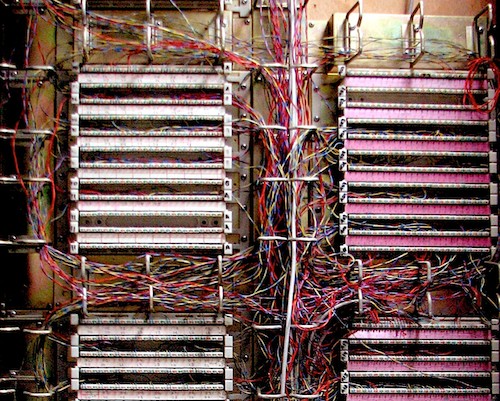In-home FttN wiring testing needed, costly: NBN Co

Connecting customers to a fibre-to-the-node (FttN) National Broadband Network (NBN) will require testing of in-home wiring and a network termination device (NTD) that costs more than the equivalent NTD in the current fibre-to-the-premises (FttP) rollout, NBN Co warned the incoming government in an assessment of the three possible scenarios for NTD deployment.

The assessment — contained in a confidential report prepared by NBN Co for the incoming government's "blue book" at the request of the now Department of Communications — warns that "FttN-based services will require in-house remediation as well as incur a modem cost that exceeds the cost of equivalent fibre-based end-user equipment".
A one-off credit for new installations "may be warranted" to ensure that the cost of end-user connections isn't too high, the report suggests.
The need for remediation of customers' in-home wiring may be more problematic, since the performance of VDSL2 technology favoured in the Coalition government's plan varies widely depending on the quality of any particular line.
This includes not only the Telstra-owned copper between the FttN node and the customer premises, but also the in-building wiring that runs to their wall socket.
This is more of an issue in apartment buildings, where in-building wiring may be extensive and old, leading to unpredictable performance. Reports from two residents of one Sydney apartment block using the technology, for example, suggest that one was getting 92Mbps on his service, while the other maxed out at 28Mbps.
Without on-site testing of every premises connected to the network, actual performance of FttN NBN services would be unknown, the report notes, warning that without further remediation, NBN Co would only be able to guarantee 25Mbps and 12Mbps speeds to all premises.
"FttN solutions are unable to provide significant amounts of guaranteed bandwidth," the report notes in an assessment of three major options for rolling out the NTD.
The three possible approaches for delivering NTDs in an FttN rollout include:
Option A: NBN Co supplies and installs a VDSL2 NTD at the end user's premises
Voice services would be delivered using VoIP services through the built-in UNI-D or UNI-V ports. This option "is not preferred due to increased rollout costs from installing CPE", the report advises.
"However, this configuration is the closest to the current architecture used in the NBN rollout today. It can deliver the UNI-D and UNI-V ports, and enables enhanced activation and assurance methodologies to be implemented on FttN (eg, a service is easy to diagnose remotely when an NTD is installed in a premises)."
Option B: The FttN service is delivered to the first wall socket in the premises
Retail service providers would supply the NTD and guide the customer through its installation, much as ADSL services are set up today.
"Issues associated with customer premises wiring would be the responsibility of end users and/or their RSPs. If there are additional socket and wiring extensions, the speed performance of the service can deteriorate significantly."
This approach would eliminate an NBN Co truck roll, but would potentially reduce the quality of the connection. "Issues associated with customer premises wiring would be the responsibility of end users and/or their RSPs. If there are additional socket and wiring extensions, the speed performance of the service can deteriorate significantly."
Voice would be delivered from a "soft switch outside the NBN", and NBN Co would shunt this traffic onto the copper line. Use of an in-home splitter — at additional cost — would then aim to minimise the effect of poor wiring by splitting data and voice services at the premises. "This requires further investigation due to the technical complexity," the report notes.
Option C: The FttN service is delivered to the first wall socket in the premises with no NTD present
This scenario would also see customers or their RSPs supply and install their own FttN gateway. Telstra would deliver voice services over the existing copper, with NBN Co delivering broadband services from the FttN node. However, the NBN Co report notes, "this is likely to be inconsistent with Telstra's structural separation obligations". It would also potentially strand customers, since it relies on the Telstra copper network, which Telstra has indicated it wants to retire.
NBN Co's report had separately identified the desire to reduce the number of truck rolls as an overriding consideration for delivering the rollout quickly and cost effectively, noting that the Coalition's current staggered plan should be modified so that the rollout can be completed in one go instead of two.
Turnbull has previously dismissed the report as "totally political" and out of date — despite subsequent evidence to the contrary — and has promised that details of his network's cost and technological models will be revealed soon.
Turnbull recently received the findings of the strategic review, but has delayed its release and defied calls by the Senate to make the document public. Turnbull's office has advised that the government "expects that the report will be released by the end of the year".